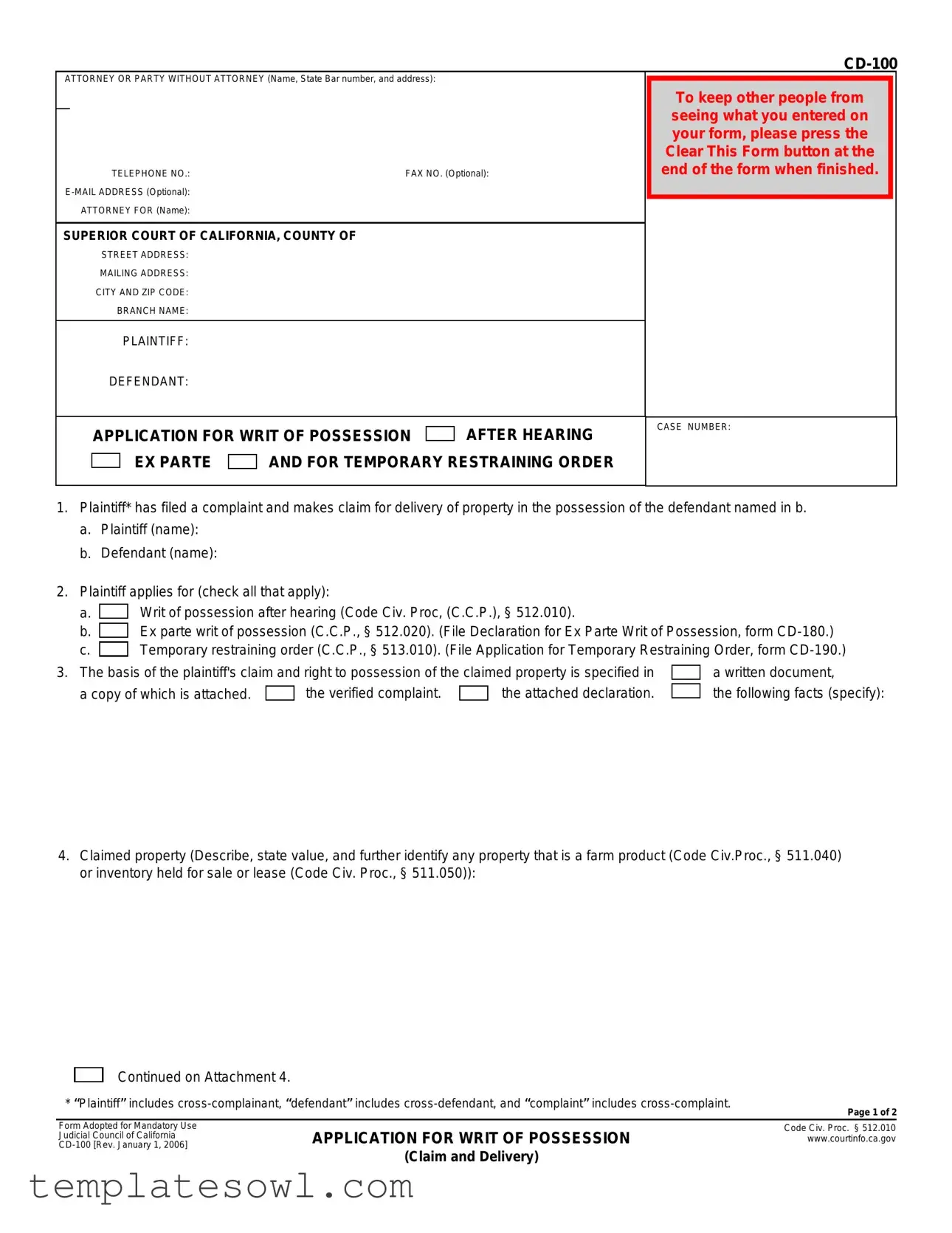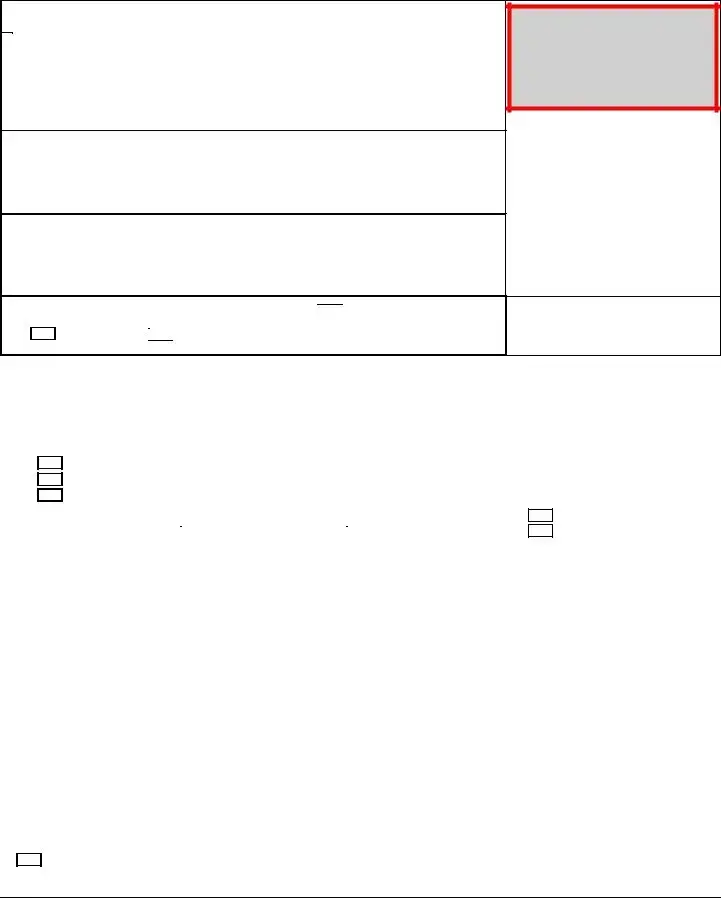What is the purpose of the Application Writ form?
The Application Writ form is used by a plaintiff to request a court order for the recovery of property unlawfully held by a defendant. This form facilitates obtaining either a writ of possession or a temporary restraining order, providing a legal basis for claiming the right to the property in question.
Who can file the Application Writ form?
This form can be filed by an attorney representing a plaintiff or by the plaintiff themselves if they are acting without an attorney. It is crucial that the individual filing the application has a legitimate claim to the property and can present the necessary evidence to support their request.
What information do I need to include in the form?
You will need to provide specific details about yourself and the defendant, including names, addresses, and contact information. Additionally, clearly describe the property in question, its value, and the basis of your claim to it. If applicable, include any supporting documents that substantiate your case.
What types of requests can I make using this form?
The form allows you to request either a writ of possession after a hearing or an ex parte writ of possession. You can also seek a temporary restraining order. Make sure to check the appropriate boxes on the form to indicate your specific requests.
Do I need to attach additional documents?
Yes, you must attach documents that support your claim. This includes a verified complaint detailing the basis of your possession claim and any other relevant evidence that demonstrates your right to the property. Clarity and thoroughness in these attachments can strengthen your case.
What happens after I submit the Application Writ form?
After submission, the court will review your application. If a hearing is required, you will be notified of the details. At the hearing, you must present your case, and the judge will decide whether to grant your requests. Be prepared to provide evidence and respond to any questions the court may have.
Is there any action I should take to protect my privacy when using this form?
Yes, it’s important to protect your information. After filling out the Application Writ form, you should click the "Clear This Form" button before closing it. This action helps ensure that no sensitive data remains visible to others after you have completed your application.


 AFTER HEARING
AFTER HEARING


 AND FOR TEMPORARY RESTRAINING ORDER
AND FOR TEMPORARY RESTRAINING ORDER
 in the attached declaration.
in the attached declaration.  as follows (specify):
as follows (specify):


